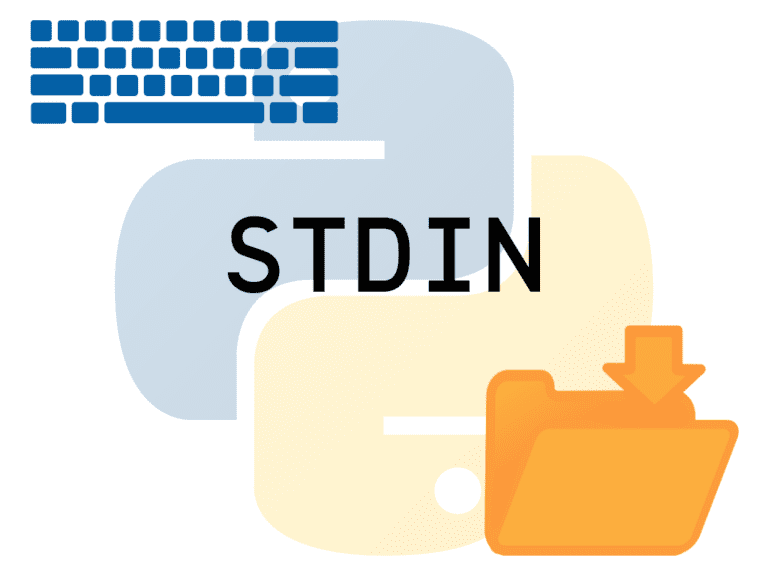How To Read From Stdin Python
How To Read From Stdin Python - Web whenever you think of python’s asterisk operator ( * ), you most likely think of multiplication or exponentiation. Web improve this question. It prompts the user for input and returns the. You can also use sys.stdin.read() if you want to. # process the input print(line.strip ()) this code sets up a loop that reads input from stdin. It gets four inputs from the user and saves it in a text file. Web reading stdin line at a time in python ask question asked 5 years, 11 months ago modified 5 years, 11 months ago viewed 27k times 8 i am trying to test a particular chat program by sending a. # read a line from stdin and store it in a variable input_str = input () # print the contents of the variable print (input_str) watch a video course python. I wanted to make an app to save my coordinates in minecraft. Using sys.stdin one way to read from stdin in python is to use sys.stdin.
The code is like this: You can also use sys.stdin.read() if you want to. At this point you would use inf to read from the file. Web you can read from stdin in python using the input function. For the input file object, we use sys.stdin. It gets four inputs from the user and saves it in a text file. Web python supports following ways to read an input from stdin (standard input), 1) using sys.stdin. Standard input, or stdin for short, is a fundamental concept in computer programming. Web 2 answers sorted by: The `input()` function reads a line from stdin and returns it as a string, with the trailing newline removed.
Web additionally, there are many ways you can read input from stdin in python programming. We will cover those methods in this article. # read a line from stdin and store it in a variable input_str = input () # print the contents of the variable print (input_str) watch a video course python. Web in python, you can read from standard input (stdin) using the ‘ sys.stdin ‘ object. >>> '2 2 4 5 7'.split () ['2', '2', '4', '5', '7'] as you see, elements are string. The `input()` function reads a line from stdin and returns it as a string, with the trailing newline removed. The code is like this: Python’s sys module provides us with all three file objects for stdin, stdout, and stderr. It prompts the user for input and returns the. If you're using pyserial, i'm pretty sure that.
How To Read From Stdin In Python Journaldev Template Mikrotik Riset
Web you would probably have better luck opening the serial port directly from python (so that you have control over buffering, for example), rather than redirecting the port to stdin. If you want to have elements as integers, use int and a list comprehension: We will cover those methods in this article. This is similar to a file, where you.
Read Input From Stdin in Python SkillSugar
At this point you would use inf to read from the file. 14 use split to split a string into a list, for example: Web in python, you can read from standard input (stdin) using the ‘ sys.stdin ‘ object. I wanted to make an app to save my coordinates in minecraft. For the input file object, we use sys.stdin.
Best Ways to Read Input in Python From Stdin Python Pool
Web you would probably have better luck opening the serial port directly from python (so that you have control over buffering, for example), rather than redirecting the port to stdin. This is similar to a file, where you can open and close it, just like any other file. The `input()` function reads a line from stdin and returns it as.
How do I read from stdin in Python? Better Stack Community
Inf = open (file_name_given) else: Web you can read from stdin in python using the input function. It allows programs to read. Web reading stdin line at a time in python ask question asked 5 years, 11 months ago modified 5 years, 11 months ago viewed 27k times 8 i am trying to test a particular chat program by sending.
Python Read Stdin? Best 5 Answer
It gets four inputs from the user and saves it in a text file. Standard input, or stdin for short, is a fundamental concept in computer programming. Web 2 answers sorted by: At this point you would use inf to read from the file. Web python supports following ways to read an input from stdin (standard input), 1) using sys.stdin.
How To Read From Stdin In Python Journaldev Template Mikrotik Gambaran
>>> '2 2 4 5 7'.split () ['2', '2', '4', '5', '7'] as you see, elements are string. Standard input, or stdin for short, is a fundamental concept in computer programming. Web in the simplest terms: Web you would probably have better luck opening the serial port directly from python (so that you have control over buffering, for example), rather.
Python Stderr, Stdin And Stdout Python Guides
Python’s sys module provides us with all three file objects for stdin, stdout, and stderr. Inf = open (file_name_given) else: This is similar to a file, where you can open and close it, just like any other file. The sys.stdin gets input from the command line directly and then calls the input () function internally. Import sys stdin_fileno = sys.stdin.
How to Read from stdin in Python With Examples [Latest] All Learning
Web you can read from stdin in python using the input function. Import sys stdin_fileno = sys.stdin # keeps reading from stdin. Python import sys for line in sys.stdin: If you want to have elements as integers, use int and a list comprehension: Web improve this question.
How to Read from stdin in Python DigitalOcean
Web improve this question. We will cover those methods in this article. Import sys stdin_fileno = sys.stdin # keeps reading from stdin. You can also use sys.stdin.read() if you want to. Similarly, you probably associate the forward slash operator ( /).
Tagspython read from stdin,python read from stdin and write to file
Web additionally, there are many ways you can read input from stdin in python programming. # read a line from stdin and store it in a variable input_str = input () # print the contents of the variable print (input_str) watch a video course python. It allows programs to read. Import sys stdin_fileno = sys.stdin # keeps reading from stdin..
Web Additionally, There Are Many Ways You Can Read Input From Stdin In Python Programming.
Inf = open (file_name_given) else: The `input()` function reads a line from stdin and returns it as a string, with the trailing newline removed. # process the input print(line.strip ()) this code sets up a loop that reads input from stdin. Python’s sys module provides us with all three file objects for stdin, stdout, and stderr.
Web You Would Probably Have Better Luck Opening The Serial Port Directly From Python (So That You Have Control Over Buffering, For Example), Rather Than Redirecting The Port To Stdin.
Web you can read from stdin in python using the input function. Read input from stdin using input () in the first method, we will see how we can read. Web whenever you think of python’s asterisk operator ( * ), you most likely think of multiplication or exponentiation. Web in python, we can read a line of input from stdin using the following syntax:
At This Point You Would Use Inf To Read From The File.
Web 2 answers sorted by: If you want to have elements as integers, use int and a list comprehension: Web in the simplest terms: Import sys stdin_fileno = sys.stdin # keeps reading from stdin.
The Code Is Like This:
Depending on whether a filename was. The sys.stdin gets input from the command line directly and then calls the input () function internally. It gets four inputs from the user and saves it in a text file. Web improve this question.







![How to Read from stdin in Python With Examples [Latest] All Learning](https://all-learning.com/wp-content/uploads/2019/08/Python-stdin-Example.png)

